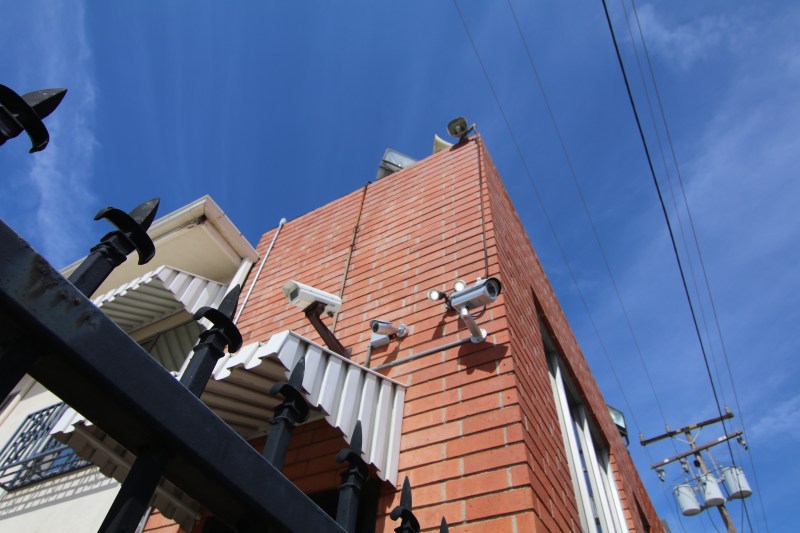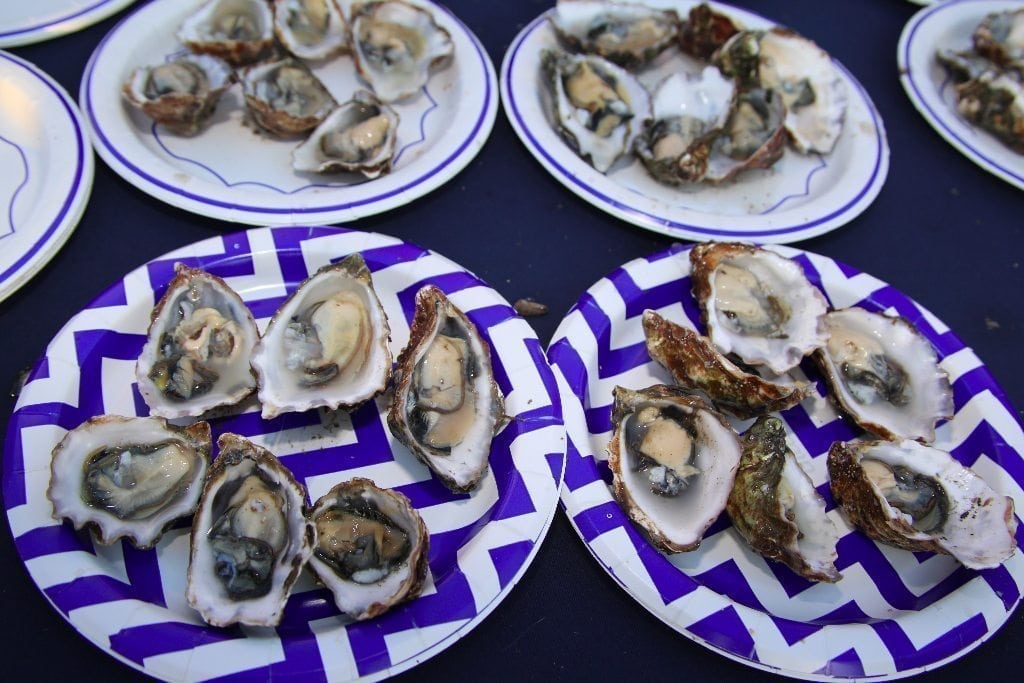Repeat after me.
Frozen burritos are still Mexican food.
“Hard shell tacos” are still Mexican food.
Mexican-American food is still Mexican food.
Ramona’s Mexican Food is still Mexican food.
In L.A. 2018, the land of $5 (and up) tacos and the capital of regional Mexican food in the U.S., it can be easy to dismiss the subgenre of Mexican cuisine known as American-Mex or what I’m dubbing as of right now: Convenient-Mex. But entire food empires like Ramona’s and their thousands of employees over the years have been sustained on the foundation of “wet burritos” and ground-beef-stuffed fried corn tortillas shaped like the letter U. More importantly, for some communities like those who live in south central Los Angeles, this hearty style of Mexican food is the only style they know, can afford, and the only style they will ever eat.
I’m not ashamed to admit that Ramona’s frozen burritos and other frozen foods like pizza rolls and dinosaur-shaped chicken nuggets kept me strong as a picky eating, latchkey kid who grew up in a home without a kitchen for many years of his life. Suffice to say, I was excited to see how Ramona’s nostalgic flavors held up as an adult.
On a Monday afternoon, a steady line of Ramona’s regulars — mostly city workers, African-Americans neighbors, construction workers, or students from nearby Dominguez Hills — are stopping in to pick up $7 burritos the size of your bicep. There are no tables, no seats, no bathrooms at the take-out only operation, just a continuous 20-foot steam table filled with steaming trays of the same food that has been made the same way since 1947.
 I’ve come here for a tour of the facilities in Gardena. The 71-year-old company recently received a revitalizing jolt of youth thanks to Ramona’s grandson, Rob Bañuelos. He stepped up as the company’s president last year and meets me right in front of the huge Ramona’s mural by the cashiers that is inspired by the actress Maria Felix at her peak.
I’ve come here for a tour of the facilities in Gardena. The 71-year-old company recently received a revitalizing jolt of youth thanks to Ramona’s grandson, Rob Bañuelos. He stepped up as the company’s president last year and meets me right in front of the huge Ramona’s mural by the cashiers that is inspired by the actress Maria Felix at her peak.
At 34 years old, shoulder-length jet-black hair, tattooed arms — signs of his past life as music marketer who worked for Lollapalooza — and wearing all-black, he’s probably the opposite of what comes to mind when thinking of a president of an industrial food factory.
 We put on white lab coats, a hair net, a facial hair net (even though I can’t grow any), and I follow him out the back of the kitchen down a set of stairs into the factory. I was secretly excited as hell because an entire childhood filled with watching reruns of Unwrapped on The Food Network had led me up to this moment. I expected robotic arms neatly folding tortillas and conveyor belts moving a never-ending amount of beans to a hopper or something but instead, I was greeted by a bunch of humans mixing Mexican-style red rice around and making flour tortillas by hand.
We put on white lab coats, a hair net, a facial hair net (even though I can’t grow any), and I follow him out the back of the kitchen down a set of stairs into the factory. I was secretly excited as hell because an entire childhood filled with watching reruns of Unwrapped on The Food Network had led me up to this moment. I expected robotic arms neatly folding tortillas and conveyor belts moving a never-ending amount of beans to a hopper or something but instead, I was greeted by a bunch of humans mixing Mexican-style red rice around and making flour tortillas by hand.
RELATED: Celebrating Ramona Acosta Bañuelos, Founder of Ramona's Mexican Food Products
 Bañuelos and his 27-year-old Plant Manager, Hector Ortega, start the tour by admitting that the labor-intensive way they do things probably doesn’t make the most financial sense, but that’s just the way they do it because it is the right way.
Bañuelos and his 27-year-old Plant Manager, Hector Ortega, start the tour by admitting that the labor-intensive way they do things probably doesn’t make the most financial sense, but that’s just the way they do it because it is the right way.
"The one quality that our brand and our frozen burritos carry that not many others have is pathos." - Rob Bañuelos
“We’re famous for our frozen burritos and we’re one of the last companies that still does hand-stretched flour tortillas,” he says. “It is the only way.” The same goes for their corn tortillas, which they still nixtamalize on premises using dried corn. Though, you probably wouldn’t think about these type of subtleties as you walk by the frozen bricks of them at Food 4 Less.
 It’s easy to demonize frozen burritos. They have no affiliation with the cult following of San Francisco’s Mission burrito and they will never be as sexy as a chewy, fresh burrito assembled at your favorite taco spot, but Ramona’s frozen burritos tell the story of Mexican-American flavors and assimilation. There is a single portrait of Ms. Ramona Bañuelos, sitting next to Richard Nixon in the early 70s that will particularly stop you in your tracks and make you rethink the power of frozen burritos. She was invited to meet him because of her Mexican food empire built, including those burritos.
It’s easy to demonize frozen burritos. They have no affiliation with the cult following of San Francisco’s Mission burrito and they will never be as sexy as a chewy, fresh burrito assembled at your favorite taco spot, but Ramona’s frozen burritos tell the story of Mexican-American flavors and assimilation. There is a single portrait of Ms. Ramona Bañuelos, sitting next to Richard Nixon in the early 70s that will particularly stop you in your tracks and make you rethink the power of frozen burritos. She was invited to meet him because of her Mexican food empire built, including those burritos.
RELATED: Mixed Feelings at El Cholo, L.A.'s Original 'Spanish Cafe'
 Ramona’s family has roots in Sonora, Mexico but she was born in Miami, Arizona. She repatriated back to Chihuahua, Mexico and she lived there until she was a teenager in the late 40s. She moved to Los Angeles after refusing to settle in Texas or Arizona, and she brought her family’s Sonoran recipes with her. She was also the first women of color to be a board member for a bank in East Los Angeles (Pan American National Bank). She worked for El Coyote and El Cholo before she started her own company. One of her employee’s went on to start the massively popular local tortilla company, Diana’s Tortillas, another started Reina’s Tortillas, and another founded El Dorado in Lincoln Heights.
Ramona’s family has roots in Sonora, Mexico but she was born in Miami, Arizona. She repatriated back to Chihuahua, Mexico and she lived there until she was a teenager in the late 40s. She moved to Los Angeles after refusing to settle in Texas or Arizona, and she brought her family’s Sonoran recipes with her. She was also the first women of color to be a board member for a bank in East Los Angeles (Pan American National Bank). She worked for El Coyote and El Cholo before she started her own company. One of her employee’s went on to start the massively popular local tortilla company, Diana’s Tortillas, another started Reina’s Tortillas, and another founded El Dorado in Lincoln Heights.
In Rob's world, just because a food is microwavable, it doesn’t mean it has to suck or be made with low-quality ingredients.
Before they started manufacturing them in-house, Ramona’s supplied all Taco Bell locations with tortillas. “Yep! It could be argued that we made Taco Bell famous, but that is another story,” Rob swears. The weathered factory survived the L.A. Riots, the Financial Crisis in 2007-2008, and now is happily floating on under Rob’s new control.
Ramona passed on January 15 this year but Rob is dead set on carrying her legacy forward to a new generation.
“The consumer packaged burrito is often viewed as at least some kind of Mexican food, or at least related to Mexico,” Bañuelos shares with me after I ask him about the haters. Apparently, his frozen burritos are the most expensive in the market. “We get a lot of heat for our prices but that’s because we use high-quality ingredients and labor-intensive process to make our product.”
In Rob's world, just because a food is microwavable, it doesn’t mean it has to suck or be made with low-quality ingredients. Reading the ingredient label on the frozen burritos, the single only additive I can immediately spot is BHT in the lard they still proudly use to refry their beans. The same ingredient that is in most American child cereals.
For Ortega, his Plant Manager who was born and raised in Chihuahua, Mexico and came to the U.S. after high school, the differences between Mexican and Mexican-American food like Ramona’s were subtle. “I was skeptical of Mexican-American food at first, especially American burritos,” he tells me. The burritos norteños that he grew up with were just flour tortillas with a scant amount of s braised meat like machaca or birria. “Why is everything always combined here?” he thought at first glance. “But once you have it, I was surprised how you can actually taste each of the elements.” He likens the dishes popular in Cal-Mex and Southwest-Mexican food, like carne en chile colorado and chile verde to the guisados of his homeland.

“The only difference is you wouldn’t see all the elements in a plate in Mexico and not wrapped up in a burrito.” Now, he tries to limit his Ramona lunches to a maximum of three times a week.
Rob has made the validity of frozen burritos in today’s Mexican food scene the reason why he gets up everyday at 5 AM to work and usually doesn’t leave until 7 PM. “I believe that companies are responsible for making the best representation of whatever they are putting out.”
In short, frozen burritos with dignity.
As we’re wrapping up the tour, still never seeing any type of robotic arms or conveyor belts in action anywhere in the factory, Rob proudly says: “I can guarantee that a human hand has touched every single piece of meat in your food.”

I’m offered a plate of two “crunchy tacos” filled with beef and potato picadillo, with those house-nixtamalized and fried “shells.” They are packed with hastily chopped iceberg lettuce, yellow shredded cheese, and slices of unripe tomatoes. It is served with rice and beans. I take a bite, smile, then take another. In my regional Mexican food journey dotted with obsessing over Jalisco’s carnes en su jugos and Oaxaca’s tlayudas, I had forgotten about the simple joy of the Cal-Mex crunchy taco. It was my first time having such a taco in over a decade probably. And I could already imagine myself stopping at the restaurant to fuel up before hitting the South Bay’s breweries just a few minutes more south.
“The one quality that our brand and our frozen burritos carry that not many others have is pathos,” Rob quietly says after he sees me enjoying the food. “People have an emotional connection to our food because at one point in their lives, whether because they were students, had just lost their job, or just going through a tough time. It was the only food they could afford or had time to eat."
RELATED: Ode to the Other Whittier Boulevard, East of East L.A.





